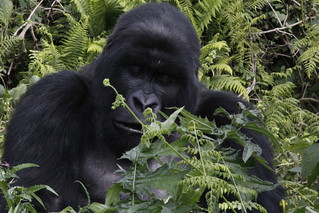The Maasai are a Nilotic ethnic group living in northern, central, and southern Kenya as well as northern Tanzania. This tribe is known for being fierce warriors and cattle rustlers. The Maasai speak a language known as Maa, a Nilotic language similar to the Dinka, Kalenjin, and Nuer languages. In the recent years however most of the Maasai have adopted to speaking English and Swahili which are Tanzania and Kenya official languages.
The Maasai are a famous group of people in East Africa due to their occupation of the areas surrounding Maasai Mara game reserve, Amboseli national park and Tanzania’s Serengeti National Park. The Maasai tribe possesses a unique culture that is seen through their way of life.
Maasai culture and traditions
The Maasai society is patriarchal in nature whereby the elder Maasai men decide on most major matters of the community. Their livelihood revolves around cattle which is their main source of food and a sign of wealth. A Maasai man with a large number of cattle and children is considered wealthy.
The Maasai have a belief that all the cattle on earth belongs to them therefore cattle rustling is a way of taking back what belongs to them. However, over the years this act has greatly reduced among the Maasai.
Unlike most tribes, the Maasai do not perform any formal funeral ceremonies for the dead but rather leave them in the fields to be eaten by scavengers. This is because they belief that burial is harmful to the soil therefore is reserved for only the great chiefs.
Among the Maasai, both men and women shave off their heads as a way of celebrating rites of passage such as circumcision and marriage. During circumcision, the boy’s head is shaved 2 days before the day for circumcision. The shaving of the head indicates the beginning of a new chapter of life. Generally, most of the Maasai maintain short hair or bold heads and only the warriors have long hair which they weave into the braided strands.
At the age of 3 years when naming of a child is done, the child’s head is shaved completely.
Maasai traditional dance
The Maasai sing and dance during the rains which they consider a great time to celebrate passages of life such as marriages and circumcision. During the singing, they use no instruments except large horns and their voices to create melodies. The beads that the dancers wear, both male and female produce a jingling sound as they dance and jump. These dances mainly took place around the manyattas.
Religious Beliefs
The Maasai belief in a god called Enkai also known as Engai. They believe that this god manifests himself inform of different colors according to his feelings at that moment. The color black and blue mean the god is gracious towards men and the color red means the god is irritated.
The god Enkai manifested himself in 2 ways; Enkai-Narok the good and beloved god who they believed was found in thunder and rain and bring grass and prosperity then Enkai-na-Nyokie the god found in lightning and the dry season and brings famine and hunger.
In the recent years however, most of the Maasai have converted to Christianity.
Clothing and beauty among the Maasai
The type of clothing the Maasai wear is different for both the male and female though both wear the same fabric. Initially the Maasai wore skins of animals such as sheep and calves but later on changed to wrapping cloths around their bodies. These clothes are known as shuka in their local language and are in colors of black, blue, red, checked and striped.
Among the Maasai ear piercing and stretching of earlobes is considered part of beauty and both men and women stretch their earlobes using metal hoops.
Maasai diet and way of life
The traditional Maasai diet consists of meat, blood, milk, fat, honey and tree back. The Maasai consume both fresh and curdled milk. The fresh milk is sometimes consumed as a mixture with fresh blood from the cattle and it’s drank from a calabash. This drink is mostly used for ritual purposes and nourishment for the sick.
During special occasions and celebrations, bulls, oxen, and lambs are slaughtered for meat. The other by products obtained from the animals serve different purposes for example hides and skins are used as beddings and cow dung is smeared on the walls of the houses to enhance their appearance.
Initially the Maasai diet mainly revolved around cattle however over the years they have incorporated plant produce such as maize, rice, and millet, among others in it.
Maasai Housing
Since the Maasai are nomadic pastoralists, they built their houses called manyattas as temporary structures using traditional ways and readily available material such as grass, mud and tree branches. These houses were either circular or loaf-shaped and were built by the women. A circular fence was then built by the men around the households to protect their cattle from cattle rustlers and wild animals.
Popular Tanzania vacation safari packages
[/vc_column_text][/vc_column][/vc_row]
10 Day Wildebeest and gorillas vacation safaris

Embark on a captivating journey through the heart of East Africa as we invite you to explore the enchanting landscapes, vibrant cultures, and rich biodiversity of Rwanda and Tanzania. This meticulously crafted 10-day itinerary promises an immersive experience, seamlessly blending the awe-inspiring encounters with gorillas
| TRIP DETAILS |
| REQUEST INFO |
6 Day Wildebeest and gorilla trekking safari

Book 6 Days Ngorongoro crater visit and Rwanda gorilla trekking to explore Tanzania & Rwanda on an Africa Safari experience tailored by Active African vacation the leading Safari operator in Uganda. The 6 Days Tanzania Rwanda Safari takes you to the great Ngorongoro crater reserve for an amazing wildlife experience.
| TRIP DETAILS |
| REQUEST INFO |
7 Day Rwanda-Tanzania vacation safari

Depending on the degree of lodging, the time of year, and the particular parks and activities included a 7-day safari in Rwanda and Tanzania might have somewhat different costs. Along with activities to do in every park, below is a sample schedule including expected expenses for middle-class, budget, and luxury alternatives.
| TRIP DETAILS |
| REQUEST INFO |

